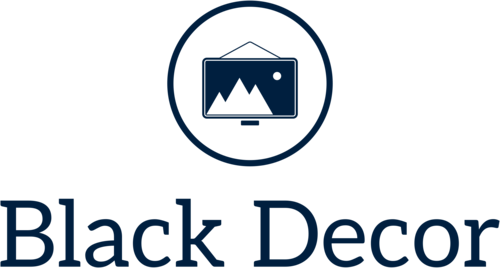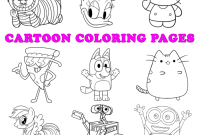Market Research & Trends

Coloring books of animals in colothes – The market for children’s coloring books is a vibrant and ever-evolving landscape, and the niche of animal coloring books featuring animals in clothes is a particularly fun and trendy segment. This market taps into children’s love for animals, creativity, and imaginative play, creating a product with broad appeal. Understanding current market demands and emerging trends is crucial for success in this competitive space.
Current market demand for animal coloring books showing animals dressed in clothing is strong, fueled by the ongoing popularity of cute animal characters and the enduring appeal of coloring activities for children. The rise of social media, with its constant stream of adorable animal images, further boosts this trend. Parents and caregivers are increasingly seeking engaging and educational activities for their children, and coloring books, offering a blend of fun and creativity, perfectly fit the bill.
The market also benefits from the accessibility and affordability of coloring books, making them a popular choice for parents and gift-givers alike.
Emerging Trends in Children’s Coloring Books
Three key trends are shaping the children’s coloring book market: the incorporation of mindfulness and relaxation techniques, the rise of interactive and augmented reality (AR) features, and a growing focus on diversity and representation. Mindfulness coloring books often feature intricate designs and calming themes, promoting relaxation and focus in children. AR features, accessible through smartphone apps, can bring static coloring pages to life, adding an extra layer of engagement and fun.
Finally, a push towards greater diversity in characters and settings reflects a broader societal shift towards inclusivity and representation in children’s media.
Animal Theme Popularity
Within the niche of animal coloring books featuring animals in clothes, farm animals consistently maintain high popularity, likely due to their familiarity and cuteness. Think adorable pigs in overalls or cows in polka-dot dresses! Wild animals, especially those perceived as cute and friendly like lions or bears, also perform well, but often require a more creative approach to clothing design to maintain a balance between realism and whimsy.
Fantasy creatures, like unicorns or dragons, offer a unique and imaginative appeal, attracting a slightly older demographic who enjoy more complex designs and storytelling opportunities. For example, a unicorn wearing a princess gown might be more popular than a realistically dressed tiger.
Preferred Age Ranges
The ideal age range for animal coloring books with animals in clothes is generally between 3 and 8 years old. Younger children (3-5) are drawn to simpler designs and bold colors, while older children (6-8) often enjoy more intricate designs and the opportunity for creative expression and personal customization. However, the specific age range will depend on the complexity of the designs and the overall theme of the coloring book.
Get ready for a wild coloring adventure! Imagine adorable animals dressed in the cutest outfits – a lion in a tiny top hat, a penguin in a stylish scarf! To kickstart your creative journey, check out these fantastic black and white animals for coloring – perfect for practicing your shading techniques before adding those fabulous clothes! Then, unleash your imagination and bring those fashion-forward furballs to life with vibrant colors!
A book featuring simple farm animals in basic outfits would appeal to a younger audience, whereas a book featuring fantastical creatures in elaborate costumes would likely be more suitable for older children. Think of the difference between a simple coloring page of a pig in a farmer’s hat versus a detailed drawing of a dragon in a suit of armor.
Design & Illustration Concepts: Coloring Books Of Animals In Colothes

This section dives deep into the visual heart of our animal-in-clothes coloring book, outlining design concepts, illustration styles, and specific examples to bring this project to life. We’ll explore various artistic approaches and create some sample designs to get those creative juices flowing. Think “totally adorable” meets “seriously stylish.”
The success of our coloring book hinges on creating engaging and visually appealing designs. The right artistic style will determine the book’s overall tone and appeal to its target audience, which is why we need to nail this part.
Coloring Page Designs
Here are three unique coloring page designs, showcasing the delightful fusion of animals and fashion:
Design 1: A dapper penguin in a monocle and top hat, elegantly perched on a snowdrift. His attire is meticulously detailed, including a tiny bow tie and spats. The background is a simple, yet elegant, winter scene. His pose is sophisticated and slightly comical, as if he’s about to deliver a witty one-liner.
Design 2: A playful monkey dressed in a vibrant Hawaiian shirt and sunglasses, swinging from a palm tree. The shirt features a bold tropical print, and the sunglasses add a cool, laid-back vibe. The background is a lush, tropical paradise, complete with other playful monkeys. His pose is dynamic and full of energy, capturing the essence of a carefree summer vacation.
Design 3: A graceful giraffe wearing a flowing, bohemian-style dress, standing in a field of wildflowers. The dress features intricate patterns and vibrant colors. The background is a picturesque meadow with butterflies flitting around. Her pose is calm and serene, highlighting the elegance of both the giraffe and her attire.
Color Book Cover Design
The cover will feature a collage-style design. A playful elephant wearing oversized sunglasses and a bright yellow raincoat is front and center. Surrounding the elephant are smaller images of other animals in equally quirky outfits: a cat in a tiny sailor suit, a bear in a chef’s hat, and a dog wearing a superhero cape. The color scheme is bright and cheerful, utilizing a mix of bold primary colors and pastel shades.
The overall style is playful and whimsical, instantly grabbing the attention of potential buyers. The title, “Animals in Outfits: A Coloring Book Adventure,” will be prominently displayed in a fun, playful font.
Artistic Styles, Coloring books of animals in colothes
Several artistic styles could work well for this coloring book. A cartoonish style would create a lighthearted and approachable feel, perfect for younger children. A more realistic style, while potentially more challenging for coloring, could appeal to older children and adults who appreciate detailed illustrations. A whimsical style, combining elements of both cartoonish and realistic approaches, could offer a broad appeal.
Each style offers a unique opportunity to express the personality and charm of each animal.
Animals and Outfits
This list demonstrates the diverse range of animal-clothing combinations we can showcase:
The versatility of this concept allows for endless possibilities, and this is just a small sampling of the many delightful combinations we can explore.
- A lion in a regal crown and cape (regal attire)
- A sloth in a comfy onesie (casual attire)
- A rabbit in a stylish waistcoat and top hat (formal attire)
- A frog in a tiny raincoat and boots (practical attire)
- A peacock in a flamboyant feathered jacket (showy attire)
Content & Features

This section dives into the fun stuff – the engaging activities and educational elements that will make our animal-in-clothes coloring book a total knockout! We’re not just talking about coloring pages; we’re talking about a complete experience that kids will love and parents will appreciate. Think “edutainment” – education disguised as entertainment!We’ll explore creative ways to boost engagement beyond simple coloring, discuss smart ways to sneak in some learning, and weigh the pros and cons of perforated pages.
Finally, we’ll map out a killer page layout that maximizes space and minimizes wasted paper, ensuring every inch of the book is packed with awesome.
Engaging Activities and Puzzles
Adding interactive elements beyond coloring significantly increases the book’s replay value and keeps kids entertained for longer. Think of it as adding extra levels to a video game – you get the base game (coloring), but then you unlock bonus rounds! Examples include simple mazes featuring the animal characters, “spot the difference” games showcasing subtle variations in outfits, or even connect-the-dots activities forming fun animal shapes.
Imagine a maze where the path leads a giraffe in a tiny top hat through a jungle gym, or a “spot the difference” game showing two penguins in stylish bow ties, one with a slightly askew bow! These activities offer a refreshing change of pace and extend the overall playtime.
Educational Elements
Subtly weaving educational elements into the designs is a genius move. It’s all about making learning fun and seamless. We can incorporate simple counting exercises by having different numbers of animal friends on each page (e.g., “Three hippos in hats!”). Animal names can be creatively incorporated by having the animal’s name subtly written near the illustration, perhaps in a fun font or as part of a speech bubble.
Think a little elephant in overalls with a speech bubble saying “My name is Ellie!” This approach seamlessly blends education with entertainment, making the learning experience enjoyable and memorable. Consider partnering with an educator or curriculum specialist for extra validation and ideas.
Perforated Pages: Benefits and Drawbacks
Perforated pages offer the convenience of easily removing completed artwork. Kids love to proudly display their creations on the fridge or send them to grandparents. However, the drawback is that perforation can sometimes affect the overall quality of the artwork, leading to potential tearing or a less professional feel. A high-quality perforation technique is key, and we need to consider the trade-off between convenience and aesthetic appeal.
Think of the perforation as a similar decision to choosing between a glossy or matte finish – each option offers a unique set of pros and cons.
Page Layout Optimization
A well-structured page layout is crucial for maximizing space and minimizing wasted area. This is where a smart table structure comes into play. Using a responsive design ensures the layout adapts well to different screen sizes and orientations.
This table-based layout allows for up to four illustrations per page, each adaptable to different screen sizes and ensuring no wasted space. The images are placeholders; imagine adorable animals in various outfits: a cat in a tiny tuxedo, a bear in a cowboy hat, a playful monkey in a superhero cape, and a dignified lion in a crown. The layout ensures a visually appealing and efficient use of the page.
We could also consider alternating larger and smaller illustrations to create visual interest and accommodate different levels of detail.







